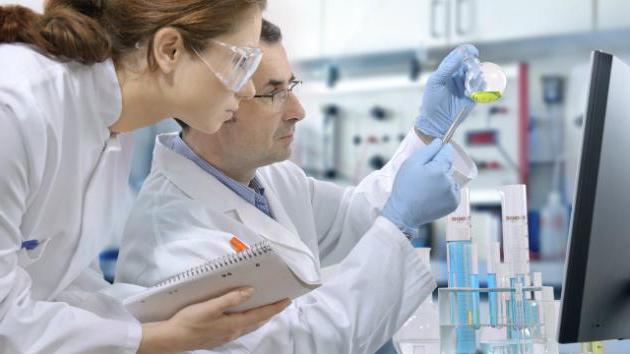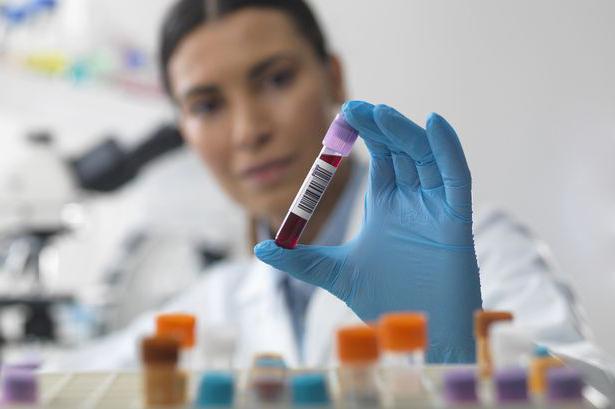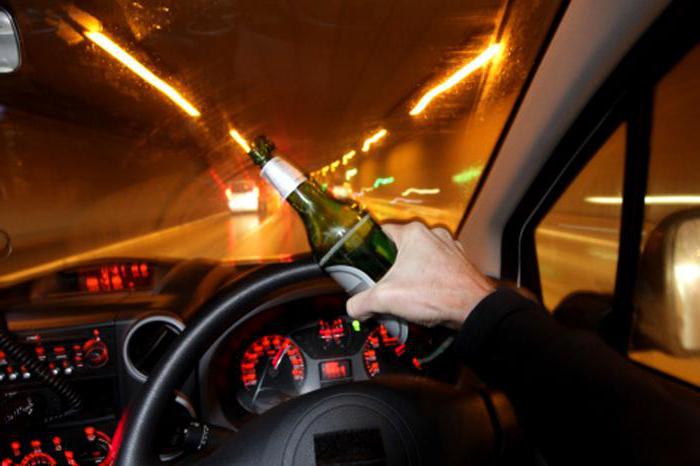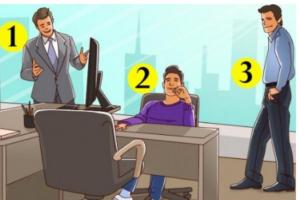A medical examination is a thorough check of the driver, which is carried out if:
- he refused to undergo a survey;
- the driver does not agree with the results provided to him;
- the inspector has reason to believe that the driver is intoxicated, even if the result of the alcohol survey was negative.
How is it carried out?

A medical examination must be carried out in full compliance with applicable regulations. The main purpose of such a check is to determine the driver’s state of intoxication, as well as the presentation of the results.
In accordance with the current legislation, a person should undergo a medical examination in the direction of the traffic police inspector, who is compiled in the presence of at least two witnesses. The fact that a person was sent to carry out this procedure is mandatory to record in the protocol, a copy of which must be presented to the driver.
Where is it held?
According to the rules, a medical examination is carried out in specialized medical institutions that have a license to carry out such activities. At the same time, we note that this procedure can be carried out not only directly in the organizations themselves, but also in mobile medical centers specially equipped for such procedures. A medical examination is carried out exclusively by a qualified psychiatrist-narcologist or any other doctor.
If an accident occurred in a rural area where there is no possibility of a doctor performing this procedure, it is carried out by a local medical assistant. In this case, the specialist must undergo preliminary training on how to conduct a medical examination.
Should there be witnesses?

In accordance with applicable law and regulations of the Ministry of Health, there is no requirement for the presence of witnesses in the behavior of this procedure. In other words, neither the Code of Administrative Offenses of the Russian Federation, nor special rules for conducting such operations include any notes that a medical examination must be carried out in the mandatory presence of witnesses. At the same time, the procedure for medical examination suggests that witnesses should nevertheless be present when drawing up the direction by the inspector.
Result

In the end, an act of the driver’s survey in triplicate is drawn up, and the document should include the date of this work, as well as the number corresponding to the registration number of the survey noted in the registry. This act also has a brief description of the driver’s appearance, his emotional background, behavior, speech characteristics, state of the motor system, and any complaints about his health. Among other things, it is also noted whether the driver had a smell of alcohol from the mouth.
Based on the results obtained, a conclusion is already being drawn up on the condition of the person being examined at the time of the procedure. Thus, an act may include only two entries:
- The state of intoxication is established.
- The state of intoxication is not established.
The conclusion that a person is intoxicated is made if there are pronounced clinical signs, and there are also positive results after checking with the help of specialized technical measuring instruments carried out with an interval of 20 minutes or using two different devices.
What do negative results do?

If the results are negative, that is, both in the exhaled air and in the blood samples, it was not possible to detect an abnormal alcohol content, but at the same time there are other signs of intoxication, the doctor will have to direct the driver to conduct a chemical toxicological study, which will determine or indicate lack of intoxication with drugs.
The determination of the presence of any psychotropic or narcotic substances is carried out exclusively in specialized chemical and toxicological laboratories of the relevant medical organizations licensed to carry out such activities. The certificate complements the second copy of the act on what the order of the medical examination was and what results it showed.
After they finish drawing up the act, the first copy is sent to the official responsible for ensuring supervision by the state and monitoring the safety of movement and operation of various vehicles. At the same time, the second act should remain in the medical institution where the medical examination of citizens was carried out, and be stored there for 3 years. The third copy is presented to the driver.
Is it possible to refuse?

In the event that a person expresses a refusal of a medical examination, an appropriate entry is made in the journal. Moreover, if carrying out this procedure in full is not possible for any reason due to the condition of the person being examined, then in this case the reasons for which certain types of studies could not be carried out are indicated in the act.
If a person refuses a certain type of research within the framework of the procedure, then in this case it is terminated and the act will not be completed, while the journal makes a note that the person refused to undergo a medical examination.
Today, it is quite widely believed that in the process of carrying out this procedure, a preliminary examination is mandatory, as well as a driver’s examination, in order to determine the clinical signs established by the certificate of the examination, and only then the exhaled air is examined, but in fact this is far from So. Neither instructions on how to conduct a medical examination of drivers, nor the rules for this procedure, nor any other regulatory documents include information about how this process goes. This must be correctly understood by observing or participating in this test.
A medical officer has the right to begin a medical examination with a detailed examination of the air exhaled by a person, and already between the first and second acts of this procedure carry out all the necessary actions that include a clinical examination.
The Code of the Russian Federation on Administrative Offenses, as well as the rules and instructions of a medical examination, do not provide for the mandatory printing of the results of the operation on any paper media, that is, paper medium on which records of all the results will be present should not be attached to the act.
Also on August 25, 2010, an order was issued on this subject.A medical examination should not be carried out taking into account the clinical signs of intoxication in the process of drawing up a report on the state of intoxication in relation to the driver. Also, this order determined the permissible concentration of ethyl alcohol, which can be observed in exhaled air.
When should a conclusion be made?

In accordance with the current instructions, a report is issued only in cases where a medical examination showed a positive result and the concentration obtained exceeds the maximum possible measurement error, while technical means should be used with a time interval of 20 minutes. Clause 16 includes information that a biological object was not taken for chemical toxicological studies.
Thus, if a medical examination for intoxication showed an excess of the norm of alcohol in exhaled air, this is the basis for drawing up a conclusion and, accordingly, bringing the driver to administrative responsibility with appropriate punishment.
Other norms
For people who are not drivers of vehicles, a medical examination for intoxication is carried out separately, and the basis for the conclusion in this case is the data obtained in the process of a comprehensive medical examination. After this procedure, exhaled air or appropriate biological fluids are already selected in order to determine the alcohol concentration in them. It is worth noting that in this case, laboratory tests of urine, saliva and exhaled air are mandatory procedures.
Such persons may include drivers, flight personnel, as well as other people, including those directly associated with source of increased danger (for example, this applies to the operators of nuclear power plants). For this category of people, the state of intoxication is established only if the corresponding clinical signs of intoxication are present, and at the same time it is established taking into account the concentration of alcohol, which is determined after a laboratory study of the biological environment. It should be noted that in accordance with the guidelines on the basis of which the doctor draws up the conclusion, a slight degree of intoxication is determined if the concentration blood alcohol is from 1 to 2%. If the alcohol content in biological media is from 0.022 to 1 ppm, then in this case it is indicated that there were no signs of intoxication.
Particular attention should be paid to the fact that for this category of people there is a provision that, upon the use of any psychoactive, narcotic or alcoholic substances, they are suspended from the performance of official duties.
Recent legislative changes

Currently, the Ministry of Health and the legislator have made a distinction between the concept of "intoxication" for drivers of vehicles, as well as those who suffered as a result of an accident, as a result of which they are in serious condition, and those people who are not drivers Vehicle. In this case, the very concept of “intoxication” was changed, not only in relation to the alcohol intoxication itself, but also in relation to that which is caused by the use of any narcotic or psychotropic substances. Thus, now a person must undergo a medical examination not in order to determine this condition, but in order to identify such substances in the body.In this regard, a fairly large number of conflicting opinions have appeared, since there is a direct dependence of the effect on the dose for different people.
Among other things, it is worth noting the fact that today the current legislation, as well as other regulatory legal acts do not include information about how the state of intoxication of a person is determined after conducting a urine test. Moreover, this fact is often not taken into account during the trial in the case when the positive result of this study is absolutely wrongfully applied to the basis of the indictment.
Disputes
In 2010, a certain citizen decided to file a statement stating that he disputed the order of the Ministry of Health related to such a procedure for conducting this check. Ultimately, the Supreme Court concluded that the conclusion that a person is or is not intoxicated can be made by a qualified doctor based on the evidence provided by the used measuring instrument.
According to the Supreme Court, the applicant’s various arguments that each person’s body has a certain proportion of endogenous alcohol in such a volume as is determined in the exhaled air by technical means of measurement, as a result of which the person can be recognized as being intoxicated, even if did not drink alcohol, are insolvent. The reason for this is that such arguments are entirely based on assumptions and are completely refuted by the explanations received from representatives of the Ministry of Health that the resolution of the various methods that are used in the process of testing for intoxication significantly exceeds the maximum concentration of endogenous alcohol, as a result, it is not determined during such an examination and, accordingly, in no way affects its results.
However, in the end, the Supreme Court nevertheless ruled that it is necessary to take into account the inaccuracy of technical means when a medical examination of alcohol intoxication is carried out. Thus, at the moment, the maximum permissible total measurement error is set at 0.16 milligrams per liter of exhaled air by legislation.
Thus, many experts say that in fact many laws contradict each other quite strongly, and ultimately it comes down to the mandatory observance of paragraph 8 of the rules, when you do not need to have an appropriate license or learn how to conduct such an audit. In other words, a medical examination differs little from a policeman, since the doctor should not even have any special knowledge in medicine, but simply use specialized technical equipment with the subsequent recording of instrument readings.
All these facts must be remembered while a medical examination for intoxication is carried out, if for any reason you still have to undergo a check. Be sure to ensure that the process is carried out in full compliance with the rules and without any errors, since intentional or even random errors in the results can ultimately turn into serious problems.








